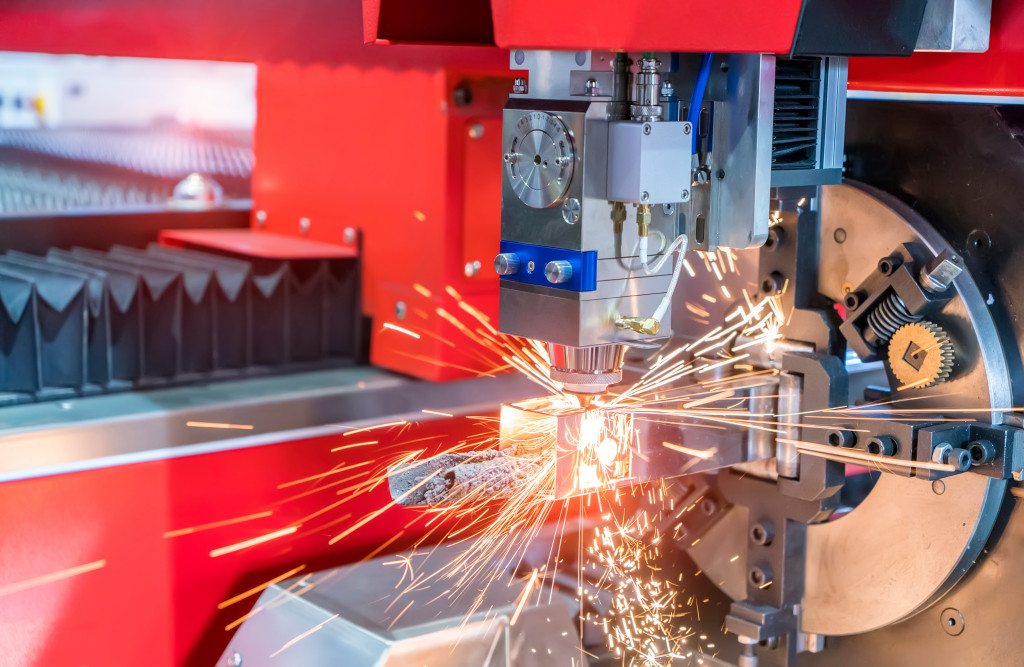The manufacturing industry is among the many landscapes that take advantage of the latest innovations entering the market. Manufacturers would invest even in technologies that are still in development just to have a competitive advantage over their rivals. This is why many technologies debut in manufacturing before they are available to general consumers.
One such technology is lasers. Manufacturing companies have been using lasers for decades now, but their applications are now more widespread and sophisticated in recent years. From cutting and welding to 3D printing and tracking codes, lasers can now perform various tasks that make it easier for manufacturing brands to streamline their processes and improve the efficiency of their operations.
Here are four examples of how lasers forever changed manufacturing:
1. Cutting and Welding
Even before saws, torches, and plasma cutters, there were lasers. The first recorded use of lasers in manufacturing was in 1961, when a team from the Hughes Aircraft Company used a ruby laser to cut and weld metals. Trumpf, a German machine tool manufacturer, further developed the process of using lasers for cutting in the 1970s.
Since then, the use of lasers in cutting metals has become widespread in the manufacturing industry. They now use lasers to cut through thicker and tougher materials such as titanium and stainless steel. The advantage of using lasers over traditional cutting methods is that it produces cleaner cuts with minimal distortion on the material.
Welding metals is also one of the most common applications of lasers in manufacturing. While it is possible to weld metals without lasers, the process is much slower and often results in a less-than-perfect weld.
Lasers can weld metals at a much faster rate and with great precision. This is important in manufacturing products where even the slightest imperfection can lead to disastrous consequences.
2. 3D Printing
Three-dimensional printing, or additive manufacturing, is one of the newest applications of lasers in the manufacturing industry. While 3D printers have been around for a while, it is only recently that makers made them sophisticated enough to be used for mass production.
One of the first companies to use 3D printers for manufacturing was GE. In 2016, GE started using industrial-grade 3D printers to produce fuel nozzles for their jet engines. The company produced the nozzles 20% faster and with 30% less waste using 3D printers.
Other companies followed suit and are now using 3D printers to produce various products, from medical implants to eyeglass frames. Lasers play a vital role in 3D printing. Most 3D printers use lasers to selectively fuse powder or liquid materials layer by layer to create the desired object. The advantage of using lasers over other methods is that they can produce objects with extremely intricate designs.
3. Code Marking and Tracking

Another common application of lasers in manufacturing is code marking and tracking. Many factories use lasers to engrave identification codes on products for traceability purposes. This helps ensure they can trace each product back to its point of origin in case of recalls or defects.
Lasers are also helpful in tracking products in the supply chain. For example, a manufacturing facility can fit each product with a QR code tag. By scanning the QR code, factories can track the product’s progress and identify bottlenecks in the production line.
Many manufacturing brands are now investing in laser sensors to automate the process of code marking and tracking. Laser sensors can detect the presence of an object and trigger the laser to mark it with a code. This helps to speed up the process and reduce errors.
For instance, many companies now use photoelectric sensors to detect when a product enters the production line. When the sensor detects the product, it will trigger the laser to mark it with a code. Sensors Incorporated, one of the most trusted names in the sensor industry, offers a wide range of photoelectric sensors that are suitable for use in manufacturing. The brand helps other businesses improve manufacturing efficiency and accuracy through its innovative sensor products. They also offer other high-quality products that can help boost productivity in manufacturing, including machine vision cameras, barcode readers and RFIDs, and safety scanners.
4. Cleaning Metal Surfaces
Some manufacturing brands do restoration projects that require cleaning old metal surfaces. In most cases, these brands use lasers to clean the metal because it is more effective than other methods.
Lasers can remove contaminants from metal surfaces, including rust, paint, oil, and grease. The advantage of using lasers is that they can clean metal surfaces without damaging the material. This is crucial in manufacturing products where a clean surface is essential, such as in the food and beverage industry.
Lasers are extremely helpful in cleaning food processing equipment because they can remove bacteria and other contaminants that could cause food poisoning. In the beverage industry, lasers clean bottles before filling them with beer, wine, or other drinks. This is to prevent contamination and maintain the quality of the product.
Cleaning metal surfaces with lasers is a cost-effective way to improve manufacturing efficiency. It helps to ensure that products are of the highest quality and free from contaminants.
Lasers have revolutionized manufacturing, making it faster, easier, and more efficient. From code marking and tracking to cleaning metal surfaces, lasers have a wide range of applications in manufacturing. If you want to improve efficiency in your manufacturing process, consider investing in laser technology. Lasers can help you with a variety of tasks, making your process faster, easier, and more efficient.
